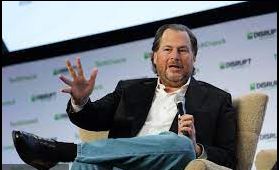1.1 Introduction
The most successful business leaders are the ones that continuously look for ways and strategies to drive performance, not only through improving employee productivity, but also their workspace experience and job satisfaction. This can be achieved by understanding how employees interact with each other and with management as well as what motivates them.
This book is therefore all about people, especially people at work. We will share many examples of people making their workplaces fit their needs as companies find ways to support them. People can make work an exciting, fun, and productive place to be; or they can make it a routine, boring, and ineffective place where everyone dreads going.
Great Place to Work® is the global authority on building, sustaining and recognizing High-Trust, High-Performance Culture at workplaces. Every year they learn from great leaders, survey millions of employees, and examining thousands of the best workplaces around the globe.
Among the top 5 companies to work at in Canada, as rated by Great Place to Work®, is Salesforce Inc. with nearly 4000 employees at their Canadian office. Salesforce is a global marketing software company that provides a broad range of internet-based customer-relationship and customer-management services. Forbes magazine called Salesforce, Inc. the most innovative company in America every year since 2011.
Marc Benioff, the CEO of Salesforce says this about people, “… customer success depends on every stakeholder. By that I mean employees who feel engaged and responsible and are growing their careers in an environment that allows them to do their best work—and this applies to all employees, from the interns to the CEO.”

Just like people, organizations come in many shapes and sizes. We understand that the career path you will take may include a variety of different careers and organizations. Some people stay in the same job or field of work for their entire lives. Many people, however, try different types of work, such as food service, hospitality, retail or business, before finding a career that fits. Even then, years later, for a variety of reasons, they may decide to change careers and do something different. In order to succeed in this type of career situation, individuals need to be armed with the tools necessary to be lifelong learners. This book will not give you all the answers to every situation you may encounter in your career. Instead, it will give you the vocabulary, framework, and critical thinking skills necessary for you to diagnose situations, ask tough questions, evaluate the answers you receive, and act in an effective and ethical manner in various professional scenarios.
Throughout this book, we will use examples of organizations that are publicly held and for-profit companies like Google, Starbucks, TD Bank, Shopify, Airbnb, etc. We will also focus on both small as well as small start-up companies to highlight how the quality of the people that form teams matters more to business success than the size of the organization.
Together, we will examine people at work both as individuals and within work groups. We will study how they impact and are impacted by the organizations they work for. Before we can understand the different levels of organizational behaviour, we first need to agree on a definition of organizational behaviour.
Organizational behaviour (OB) is the study of how people think, feel, and behave individually or in groups within organizations. The goal of OB is to understand the behaviour of people at work in order to develop interventions, systems, and processes that create happier and more productive employees, more effective leaders, and more meaningful work. As you will see throughout this book, definitions and concepts are important. They are important because they tell us what something is, as well as what it is not. For example, we will not be addressing childhood development in this course—the concept is often covered in psychology—but we might draw on research about twins raised apart to understand whether job attitudes are affected by genetics.
OB draws from other disciplines to create a unique field. As you read this book, you will most likely recognize OB’s roots in other disciplines. For example, when we cover topics such as personality and motivation, we will again review studies from the field of psychology. The topic of team processes relies heavily on the field of sociology. In the chapter relating to decision making, you will encounter the influence of economics. When we study power and influence in organizations, we borrow heavily from political sciences. Even medical science contributes to the field of Organizational Behaviour, particularly to the study of stress and its effects on individuals.

Those who study organizational behaviour—which now includes you—are interested in several outcomes such as work attitudes (job satisfaction and organizational commitment) and job performance (customer service and counterproductive work behaviors).
A distinction is made in OB regarding which level of the organization is being studied at any given time. There are three key levels of analysis in OB: the individual, the group, and the organization. For example, if I want to understand my boss’s personality, my analysis would be at the individual level. If I want to understand how my manager’s personality affects the team, I will consider the team level. But, if I want to understand how my organization’s culture affects my boss’s behaviour, I would be interested in the organizational level of analysis.

